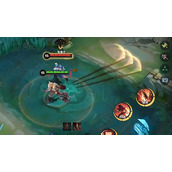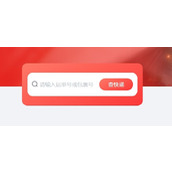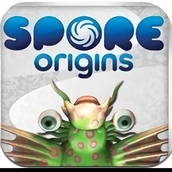Angular使用动态加载组件方法实现Dialog的示例
网上的文章和教程基本上写到组件加载完成就没了!没了?!而且都是只能存在一个dialog,想要打开另一个dialog必须先销毁当前打开的dialog,之后看过 material 的实现方式,怪自己太蠢看不懂源码,就只能用自己的方式来实现一个dialog组件了
Dialog组件的目标:可以同时存在多个Dialog,可销毁指定Dialog,销毁后html中无组件残留且提供回调
动态加载组件的实现方式有两种,angular4.0版本之前使用ComponentFactoryResolver来实现,4.0之后可以使用更便捷的ngComponentOutlet来实现,
通过ComponentFactoryResolver实现动态载入
首先理一下ViewChild、ViewChildren、ElementRef、ViewContainerRef、ViewRef、ComponentRef、ComponentFactoryResolver之间的关系:
ViewChild 与 ViewChildren
ViewChild是通过模板引用变量(#)或者指令(directive)用来获取 Angular Dom 抽象类,ViewChild可以使用 ElementRef 或者 ViewContainerRef 进行封装。
@ViewChild('customerRef') customerRef:ElementRef;
ViewChildren通过模板引用变量或者指令用来获取QueryList,像是多个ViewChild组成的数组。
@ViewChildren(ChildDirective) viewChildren: QueryList;
ElementRef 与 ViewContainerRef
ViewChild可以使用 ElementRef 或者 ViewContainerRef 进行封装,那么 ElementRef 和 ViewContainerRef 的区别是什么?
用 ElementRef 进行封装,然后通过 .nativeElement 来获取原生Dom元素
console.log(this.customerRef.nativeElement.outerHTML);
ViewContainerRef :视图的容器,包含创建视图的方法和操作视图的api(组件与模板共同定义了视图)。api会返回 ComponentRef 与 ViewRef,那么这两个又是什么?
// 使用ViewContainetRef时,请使用read声明
@ViewChild('customerRef',{read: ViewContainerRef}) customerRef:ViewContainerRef;
···
this.customerRef.createComponent(componentFactory) // componentFactory之后会提到
ViewRef 与 ComponentRef
ViewRef 是最小的UI单元,ViewContainerRef api操作和获取的就是ViewRef
ComponentRef:宿主视图(组件实例视图)通过 ViewContainerRef 创建的对组件视图的引用,可以获取组件的信息并调用组件的方法
ComponentFactoryResolver
要获取 ComponentRef ,需要调用 ViewContainer 的 createComponent 方法,方法需要传入ComponentFactoryResolver创建的参数
constructor(
private componentFactoryResolver:ComponentFactoryResolver
) { }
viewInit(){
componentFactory =
this.componentFactoryResolver.resolveComponentFactory(DialogComponent);
// 获取对组件视图的引用,到这一步就已经完成了组件的动态加载
componentRef = this.customerRef.createComponent(componentFactory);
// 调用载入的组件的方法
componentRef.instance.dialogInit(component);
}
具体实现
let componentFactory,componentRef;
@ViewChild('customerRef',{read: ViewContainerRef}) customerRef:ViewContainerRef;
constructor(
private componentFactoryResolver:ComponentFactoryResolver
) { }
viewInit(){
// DialogComponent:你想要动态载入的组件,customerRef:动态组件存放的容器
componentFactory =
this.componentFactoryResolver.resolveComponentFactory(DialogComponent);
componentRef = this.customerRef.createComponent(componentFactory);
}
通过ngComponentOutlet实现动态载入
ngComponentOutlet 大大缩减了代码量,但是只有带4.0之后的版本才支持
具体实现
在dialog.component.html建立动态组件存放节点
将组件(不是组件名称)传入,就OK了,为什么可以这么简单!
dialogInit(component){
this.componentName = component;
};
Dialog的实现
实现的思路是这样的:首先创建一个dialog组件用来承载其他组件,为dialog创建遮罩和动画,建立一个service来控制dialog的生成和销毁,不过service只生成dialog,dialog内的组件还是需要在dialog组件内进行生成
1、首先写一个公共的service,用来获取根组件的viewContainerRef(尝试过 ApplicationRef 获取根组件的 viewContainerRef 没成功,所以就写成service了)
gerRootNode(...rootNodeViewContainerRef){
if(rootNode){
return rootNode;
}else {
rootNode = rootNodeViewContainerRef[0];
};
}
// 然后再根组件.ts内调用
this.fn.gerRootNode(this.viewcontainerRef);
2、创建dialog.service.ts,定义open、close三个方法,使用ViewContainerRef创建dialog组件,创建之前需要调用 ComponentFactoryReslover,并将DialogComponent传入
let componentFactory;
let componentRef;
@Injectable()
export class DialogService {
constructor(
private componentFactoryResolver:ComponentFactoryResolver
private fn:FnService
) { }
open(component){
componentFactory =
this.componentFactoryResolver.resolveComponentFactory(DialogComponent);
// 这里的获取的是ComponentRef
containerRef = this.fn.gerRootNode().createComponent(componentFactory);
// 将containerRef存储下来,以便之后的销毁
containerRefArray.push(containerRef);
// 调用了组件内的初始化方法,后面会提到
return containerRef.instance.dialogInit(component,containerRef);
}
// 这里有两种情况,一种是在当前组件和dialog组件关闭调用的,因为有返回值所以可以关闭指定的dialog;还有一种是在插入到dialog组件内的组件调用的,因为不知道父组件的信息,所以默认关闭最后一个dialog
close(_containerRef=null){
if( _containerRef ){
return _containerRef.containerRef.instance.dialogDestory();
}else{
containerRefArray.splice(-1,1)[0].instance.dialogDestory();
}
}
}
3、dialog.component.ts,这里使用 ngComponentOutlet 来实现(ngComponentOutlet 在下面提到,这里为了偷懒,直接拿来用了)
let containerRef,dialogRef = new DialogRef();
export class DialogComponent implements OnInit {
componentName;
constructor(
private fn:FnService
) { }
dialogInit( _component, _containerRef){
this.componentName = _component;
containerRef = _containerRef;
dialogRef['containerRef'] = containerRef;
return dialogRef;
};
dialogDestory(){
let rootNode = this.fn.gerRootNode();
// 等待动画结束再移除
setTimeout(()=>{
// 这里用到了 viewContainerRef 里的indexOf 和 remove 方法
rootNode.remove(rootNode.indexOf(containerRef.hostView));
},400);
dialogRef.close();
return true;
};
}
4、这里还创建了一个 DialogRef 的类,用来处理 dialog 关闭后的回调,这样就可以使用 XX.afterClose().subscribe() 来创建回调的方法了
@Injectable()
export class DialogRef{
public afterClose$ = new Subject();
constructor(){}
close(){
this.afterClose$.next();
this.afterClose$.complete();
}
afterClose(){
return this.afterClose$.asObservable();
}
}
创建和销毁dialog
// 创建
let _viewRef = this.dialogService.open(DialogTestComponent);
_viewRef.afterClose().subscribe(()=>{
console.log('hi');
});
// 销毁
this.dialogService.close()
相关文章
精彩推荐
-
 下载
下载孢子2生物进化中文版(Spores)
模拟经营 孢子2生物进化中文版(Spores)孢子2生物进化中文版让我们来做一回疯狂的博士,打造一个属于自
-
 下载
下载叫我万岁爷九游官方版
模拟经营 叫我万岁爷九游官方版叫我万岁爷带你体验当换地点感觉,全新的模拟手游大作让你开始一
-
 下载
下载梦回凤歌
模拟经营 梦回凤歌梦回凤歌手游中你将步入古代的宫廷纷争之中,本想度过美好幸福的
-
 下载
下载洋果子店rose最新版本
模拟经营 洋果子店rose最新版本洋果子店最新版是一款十分容易让人垂涎的开店经营类手游。游戏玩
-
 下载
下载明日大亨最新版
模拟经营 明日大亨最新版明日大亨手游,一个非常经典有趣的模拟经营类型的商战手游,在游















